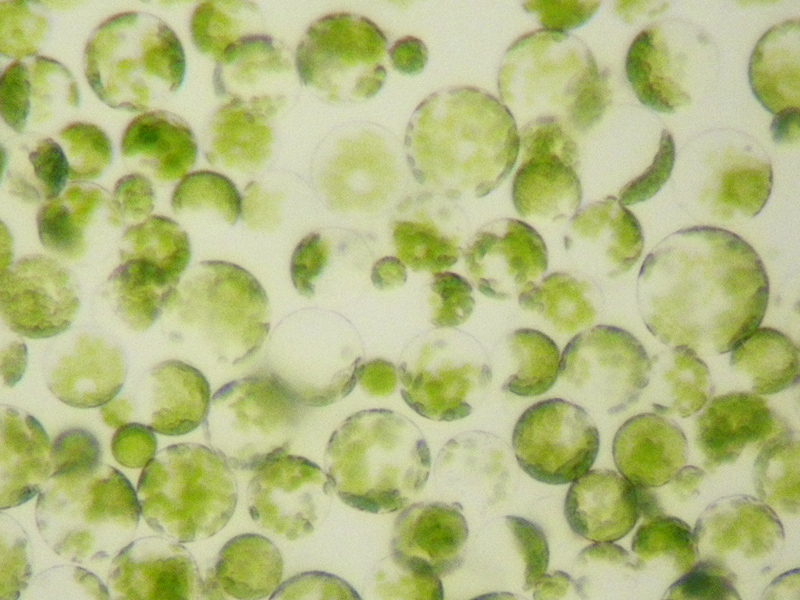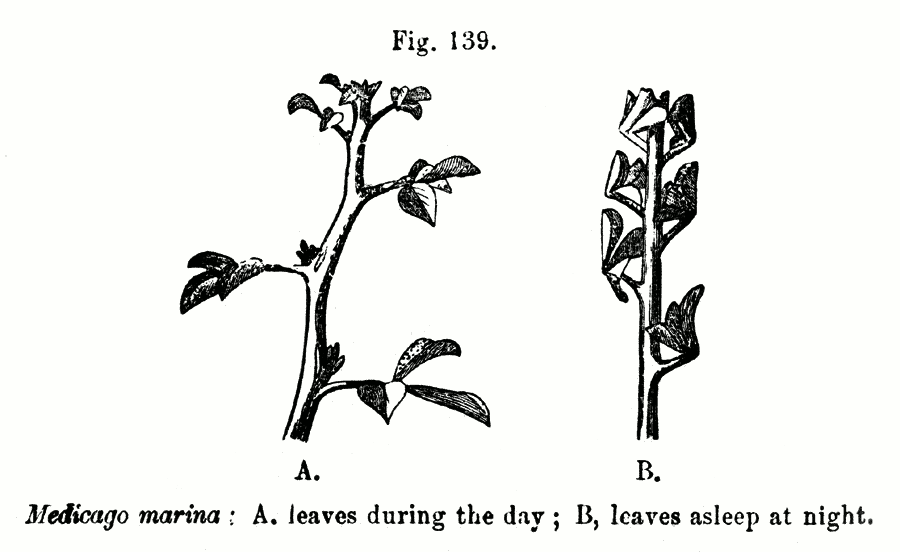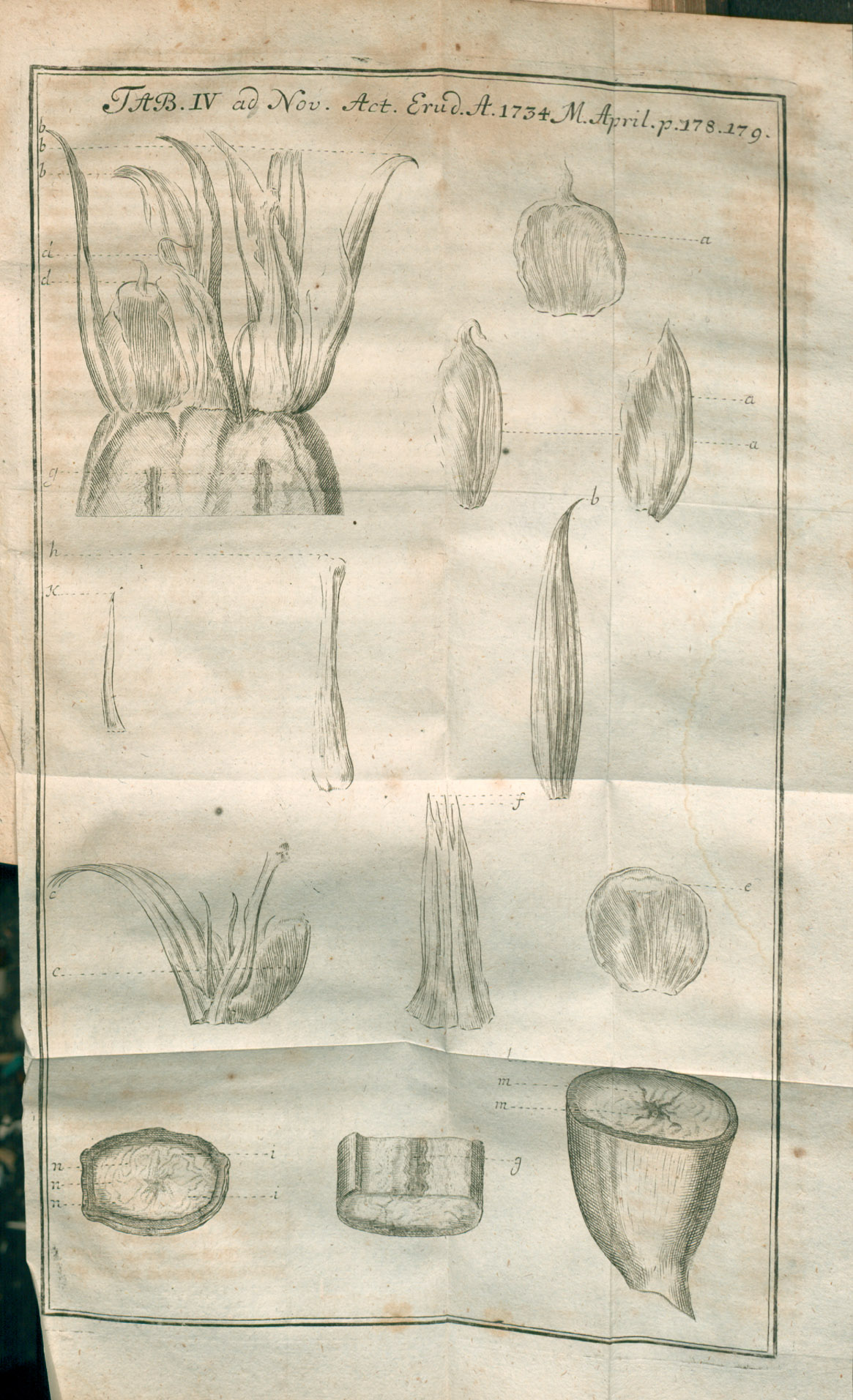|
Wilhelm Pfeffer
Wilhelm Friedrich Philipp Pfeffer (9 March 1845 – 31 January 1920) was a German botanist and plant physiologist born in Grebenstein. Academic career He studied chemistry and pharmacy at the University of Göttingen, where his instructors included Friedrich Wöhler (1800-1882), William Eduard Weber (1804-1891) and Wilhelm Rudolph Fittig (1835-1910). Afterwards, he furthered his education at the universities of Marburg and Berlin. At Berlin, he studied under Alexander Braun (1805-1877) and was an assistant to Nathanael Pringsheim (1823-1894). Later on, he served as an assistant to Julius von Sachs (1832-1897) at Würzburg, In 1873 he was appointed professor of pharmacology and botany at the University of Bonn, followed by professorships at the Universities of Basel (from 1877) and Tübingen (from 1878), where he also served as director of the Botanischer Garten der Universität Tübingen. In 1887 he became a professor at the University of Leipzig and director of its botanical ... [...More Info...] [...Related Items...] OR: [Wikipedia] [Google] [Baidu] |
PSM V50 D330 Wilhem Pfeffer Professor Of Botany Tubingen
PSM, an acronym, may refer to: Organizations * Sepaktakraw Association of Malaysia ( ms, Persatuan Sepaktakraw Malaysia; PSM), a national governing body in Malaysia. * Pakistan School Muscat, a Pakistani co-educational institute in Oman * Palestine Solidarity Movement, a student organization in the United States * Panhellenic Socialist Movement, a centre-left party in Greece * Parti Sosialis Malaysia, a socialist political party in Malaysia * PlayStation: The Official Magazine, a magazine originally known as PlayStation Magazine or PSM * Ponce School of Medicine, a post-graduate medical school located in Ponce, Puerto Rico * Power Systems Mfg, a subsidiary of Alstom, specializing in aftermarket gas turbine servicing for power generating industry. * ''Poznańska Spółdzielnia Mieszkaniowa'', a housing cooperative administering most of the Piątkowo district of Poznań, Poland * PSM3, a UK video game magazine specializing in Sony consoles * PSM Makassar, a football club that pla ... [...More Info...] [...Related Items...] OR: [Wikipedia] [Google] [Baidu] |
University Of Bonn
The Rhenish Friedrich Wilhelm University of Bonn (german: Rheinische Friedrich-Wilhelms-Universität Bonn) is a public research university located in Bonn, North Rhine-Westphalia, Germany. It was founded in its present form as the ( en, Rhine University) on 18 October 1818 by Frederick William III, as the linear successor of the ( en, Academy of the Prince-elector of Cologne) which was founded in 1777. The University of Bonn offers many undergraduate and graduate programs in a range of subjects and has 544 professors. The University of Bonn is a member of the U15 (German universities), German U15 association of major research-intensive universities in Germany and has the title of "University of Excellence" under the German Universities Excellence Initiative; it is consistently ranked amongst the best German universities in the world rankings and is one of the most research intensive universities in Germany. Bonn has 6 Clusters of Excellence, the most of any German university; t ... [...More Info...] [...Related Items...] OR: [Wikipedia] [Google] [Baidu] |
Osmometer
An osmometer is a device for measuring the osmotic strength of a solution, colloid, or compound. There are several different techniques employed in osmometry: * Vapor pressure osmometers determine the concentration of osmotically active particles that reduce the vapor pressure of a solution. * Membrane osmometers measure the osmotic pressure of a solution separated from pure solvent by a semipermeable membrane. * Freezing point depression osmometers may also be used to determine the osmotic strength of a solution, as osmotically active compounds depress the freezing point of a solution. Osmometers are useful for determining the total concentration of dissolved salts and sugars in blood or urine samples. Osmometry is also useful in determining the molecular weight of unknown compounds and polymers. Osmometry is the measurement of the osmotic strength of a substance. This is often used by chemists for the determination of average molecular weight A molecule is a group ... [...More Info...] [...Related Items...] OR: [Wikipedia] [Google] [Baidu] |
Osmosis
Osmosis (, ) is the spontaneous net movement or diffusion of solvent molecules through a selectively-permeable membrane from a region of high water potential (region of lower solute concentration) to a region of low water potential (region of higher solute concentration), in the direction that tends to equalize the solute concentrations on the two sides. It may also be used to describe a physical process in which any solvent moves across a selectively permeable membrane (permeable to the solvent, but not the solute) separating two solutions of different concentrations. Osmosis can be made to do work. Osmotic pressure is defined as the external pressure required to be applied so that there is no net movement of solvent across the membrane. Osmotic pressure is a colligative property, meaning that the osmotic pressure depends on the molar concentration of the solute but not on its identity. Osmosis is a vital process in biological systems, as biological membranes are semiperm ... [...More Info...] [...Related Items...] OR: [Wikipedia] [Google] [Baidu] |
Metabolism
Metabolism (, from el, μεταβολή ''metabolē'', "change") is the set of life-sustaining chemical reactions in organisms. The three main functions of metabolism are: the conversion of the energy in food to energy available to run cellular processes; the conversion of food to building blocks for proteins, lipids, nucleic acids, and some carbohydrates; and the elimination of metabolic wastes. These enzyme-catalyzed reactions allow organisms to grow and reproduce, maintain their structures, and respond to their environments. The word metabolism can also refer to the sum of all chemical reactions that occur in living organisms, including digestion and the transportation of substances into and between different cells, in which case the above described set of reactions within the cells is called intermediary (or intermediate) metabolism. Metabolic reactions may be categorized as ''catabolic'' – the ''breaking down'' of compounds (for example, of glucose to pyruvate by ce ... [...More Info...] [...Related Items...] OR: [Wikipedia] [Google] [Baidu] |
Photosynthesis
Photosynthesis is a process used by plants and other organisms to convert light energy into chemical energy that, through cellular respiration, can later be released to fuel the organism's activities. Some of this chemical energy is stored in carbohydrate molecules, such as sugars and starches, which are synthesized from carbon dioxide and water – hence the name ''photosynthesis'', from the Greek ''phōs'' (), "light", and ''synthesis'' (), "putting together". Most plants, algae, and cyanobacteria perform photosynthesis; such organisms are called photoautotrophs. Photosynthesis is largely responsible for producing and maintaining the oxygen content of the Earth's atmosphere, and supplies most of the energy necessary for life on Earth. Although photosynthesis is performed differently by different species, the process always begins when energy from light is absorbed by proteins called reaction centers that contain green chlorophyll (and other colored) pigments/chromoph ... [...More Info...] [...Related Items...] OR: [Wikipedia] [Google] [Baidu] |
Protoplast
Protoplast (), is a biological term coined by Hanstein in 1880 to refer to the entire cell, excluding the cell wall. Protoplasts can be generated by stripping the cell wall from plant, bacterial, or fungal cells by mechanical, chemical or enzymatic means. Protoplasts differ from spheroplasts in that their cell wall has been completely removed. Spheroplasts retain part of their cell wall. In the case of Gram-negative bacterial spheroplasts, for example, the peptidoglycan component of the cell wall has been removed but the outer membrane component has not. Enzymes for the preparation of protoplasts Cell walls are made of a variety of polysaccharides. Protoplasts can be made by degrading cell walls with a mixture of the appropriate polysaccharide-degrading enzymes: During and subsequent to digestion of the cell wall, the protoplast becomes very sensitive to osmotic stress. This means cell wall digestion and protoplast storage must be done in an isotonic solution to prevent ... [...More Info...] [...Related Items...] OR: [Wikipedia] [Google] [Baidu] |
Nyctinastic
Nyctinasty is the circadian rhythmic nastic movement of higher plants in response to the onset of darkness, or a plant "sleeping". Nyctinastic movements are associated with diurnal light and temperature changes and controlled by the circadian clock. It has been argued that for plants that display foliar nyctinasty, it is a crucial mechanism for survival; however, most plants do not exhibit any nyctinastic movements. Nyctinasty is found in a range of plant species and across xeric, mesic, and aquatic environments, suggesting that this singular behavior may serve a variety of evolutionary benefits. Examples are the closing of the petals of a flower at dusk and the sleep movements of the leaves of many legumes. Physiology Plants use phytochrome to detect red and far red light. Depending on which kind of light is absorbed, the protein can switch between a Pr state that absorbs red light and a Pfr state that absorbs far red light. Red light converts Pr to Pfr and far red light convert ... [...More Info...] [...Related Items...] OR: [Wikipedia] [Google] [Baidu] |
Nastic
Nastic movements are non-directional responses to stimuli (e.g. temperature, humidity, light irradiance), and are usually associated with plants. The movement can be due to changes in turgor. Decrease in turgor pressure causes shrinkage while increase in turgor pressure brings about swelling. Nastic movements differ from tropic movements in that the direction of tropic responses depends on the direction of the stimulus, whereas the direction of nastic movements is independent of the stimulus's position. The tropic movement is growth movement but nastic movement may or may not be growth movement. The rate or frequency of these responses increases as intensity of the stimulus increases. An example of such a response is the opening and closing of flowers (photonastic response), movement of euglena, chlamydomonas towards the source of light. They are named with the suffix "-nasty" and have prefixes that depend on the stimuli: * Epinasty: downward-bending from growth at the top, for ... [...More Info...] [...Related Items...] OR: [Wikipedia] [Google] [Baidu] |
Royal Swedish Academy Of Sciences
The Royal Swedish Academy of Sciences ( sv, Kungliga Vetenskapsakademien) is one of the Swedish Royal Academies, royal academies of Sweden. Founded on 2 June 1739, it is an independent, non-governmental scientific organization that takes special responsibility for promoting natural sciences and mathematics and strengthening their influence in society, whilst endeavouring to promote the exchange of ideas between various disciplines. The goals of the academy are: * to be a forum where researchers meet across subject boundaries, * to offer a unique environment for research, * to provide support to younger researchers, * to reward outstanding research efforts, * to communicate internationally among scientists, * to advance the case for science within society and to influence research policy priorities * to stimulate interest in mathematics and science in school, and * to disseminate and popularize scientific information in various forms. Every year, the academy awards the Nobel Priz ... [...More Info...] [...Related Items...] OR: [Wikipedia] [Google] [Baidu] |
Leipzig Botanical Garden
The Leipzig Botanical Garden (german: Leipziger Botanische Gärten, Botanischer Garten der Universität Leipzig) is a 3.5-hectare botanical garden maintained by the University of Leipzig and is located at Linnéstraße 1, Leipzig, Saxony, Germany. It is the oldest botanical garden in Germany and among the oldest in the world, and open daily without charge. Leipzig's botanical garden dates back to at least 1542, although the garden has moved several times. They were created shortly after the university's reform in 1539, when Maurice, Elector of Saxony donated the Dominican monastery of St. Pauli. Its former monastery garden, on the north side of the Paulinerkirche, was reworked as a ''hortus medicus'' by May 1543. This first garden was destroyed in the Thirty Years' War, and in 1648 the university acquired a new site (now Grimmaische Street) where in 1653 it created its second garden. In 1807 the garden was moved to the grounds of the Pleißemühlgraben, where greenhouses were co ... [...More Info...] [...Related Items...] OR: [Wikipedia] [Google] [Baidu] |
University Of Leipzig
Leipzig University (german: Universität Leipzig), in Leipzig in Saxony, Germany, is one of the world's oldest universities and the second-oldest university (by consecutive years of existence) in Germany. The university was founded on 2 December 1409 by Frederick I, Elector of Saxony and his brother William II, Margrave of Meissen, and originally comprised the four scholastic faculties. Since its inception, the university has engaged in teaching and research for over 600 years without interruption. Famous alumni include Gottfried Wilhelm von Leibniz, Johann Wolfgang von Goethe, Leopold von Ranke, Friedrich Nietzsche, Robert Schumann, Richard Wagner, Tycho Brahe, Georgius Agricola, Angela Merkel and ten Nobel laureates associated with the university. History Founding and development until 1900 The university was modelled on the University of Prague, from which the German-speaking faculty members withdrew to Leipzig after the Jan Hus crisis and the Decree of Kutná H ... [...More Info...] [...Related Items...] OR: [Wikipedia] [Google] [Baidu] |








